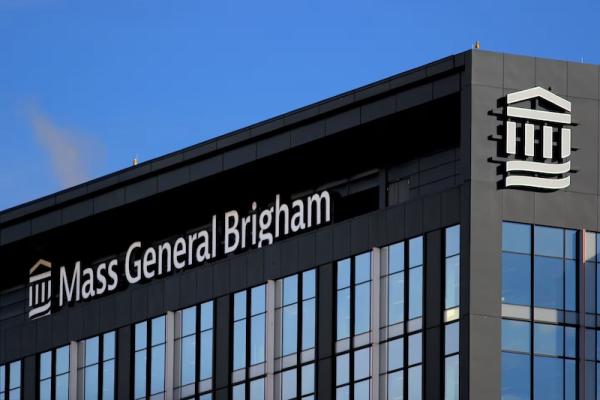Among Massachusetts hospitals, the gap between rich and poor widens - The Boston Globe

DATE: August 7, 2024
Hospitals that serve lower income patients charge much lower prices compared to big players like Mass General Brigham.
Community hospitals like those operated by Steward Health Care had problems before the company’s collapse, and they are likely to remain in a financially precarious situation even after the troubled operator departs, state data shows.
That’s because community hospitals — including many operated by companies other than Steward — receive a relative pittance from insurers, even when they’re providing the same services as Boston’s glimmering academic medical centers.
The latest state review of hospital payment data, released this month by the Center for Health Information and Analysis, underscores a persistent gap in the fortunes of acute care facilities. Community hospitals that see a high proportion of people with public insurance commanded prices that are 7 percent below the state average.

The corporate offices of Mass General Brigham hospitals in Somerville's Assembly Square.
It’s a twofold problem: Those insurance programs — such as Medicaid and Medicare — pay below-market rates. On top of that, private payers such as Blue Cross Blue Shield, Tufts, and Harvard Pilgrim Health Care pay less to community hospitals than they do academic facilities.
Meanwhile, community hospitals continue to deal with some of the same issues as their richer peers, as they struggle to manage high labor costs and the need to modernize facilities.
The situation is not sustainable, said John Freedman, president of the Freedman HealthCare consulting firm in Burlington. Large hospitals charge higher prices not because they offer better services, he said, but because they are the biggest or only health care provider in their markets.
“Doctors and hospitals in Massachusetts don’t get paid what they deserve, they get paid what they negotiate,” he said. “The big players and some locally dominant ones, too, get paid more at the expense of the smaller, regardless of their quality or efficiency of care.”
The report analyzed data from 2022, the latest full year available. Of the $11.5 billion commercial insurers paid out to hospitals that year, 42.1 percent went to academic medical centers, including Mass General and Beth Israel Deaconess, the report said. Less than 20 percent went to community hospitals, which mostly treat patients enrolled in Medicare and Medicaid. Such hospitals generate at least 63 percent of their gross patient service revenue from those public payers.
The state’s three largest insurers — Blue Cross Blue Shield, Tufts, and Harvard Pilgrim Health Care — offer considerably higher rates than Medicare and Medicaid, which by some estimates pay hospitals only 75 to 90 percent of the actual cost to treat patients.
But even among privately insured patients at a community hospital, commercial payers will likely pay that hospital much less than what they would pay a larger facility.
In 2022, Holyoke Medical Center, a community hospital that treats mostly patients on public insurance, charged prices that were 82 percent of what Blue Cross Blue Shield paid out on average for outpatient services, according to the state report. Southcoast Hospitals Group only managed to charge 76 percent.
By contrast, Massachusetts General Hospital charged prices that were 48 percent higher than what Blue Cross Blue Shield paid out on average for outpatient services that year.
“These findings demonstrate the longstanding disparities community hospitals face while maintaining their commitment to serving all patients,” Southcoast CEO David McCready said in a statement. “To meaningfully address these inequities regardless of a patient’s ZIP code, insurers must commit to providing fair and equitable reimbursement for community hospitals.”
The Massachusetts Hospital & Health Association said it is working to provide more financial support to safety net community hospitals and to help all hospitals reduce overall costs.
For example, the group wants to help hospitals recruit and retain more nurses so they don’t need to rely on more expensive temporary help. Helping hospitals figure out ways to get paid for care faster is also a top priority.
“Nothing is more important at this moment than restoring stability to our local hospitals and ensuring their world-class care remains viable and accessible for all patients,” Michael Sroczynski,executive vice president and general counsel, said in a statement.
Steward, which operates eight hospitals in Eastern Massachusetts, recently filed for Chapter 11 bankruptcy. CEO Ralph de la Torre has blamed the hospital’s financial woes on not getting sufficient payments from insurance companies.
The company’s critics have responded that while Steward hospitals do struggle with many of the same challenges as their peers, the company’s situation was made worse by management decisions. In particular, the company’s decision to sell its facilities real estate to investors for a cash payment — leaving the sites on the hook for millions in rent payments — has been a source of trouble for Steward.
And while reimbursement woes certainly played a role in Steward’s financial struggles, a recent analysis provided to the Globe shows that its executives may have been exaggerating the problem. The analysis found that Steward’s hospitals as a group are paid the same as or better than many Massachusetts hospital systems for the medical care they provide.
The state report also supports that conclusion. In 2022, Good Samaritan Medical Center charged prices that were 8 percent higher than what Blue Cross Blue Shield paid out on average for inpatient services. St. Elizabeth Medical Center charged prices that were 17 percent higher for inpatient services.
“Steward is not badly paid at all,” Freedman said.
Even the two hospitals — Carney Hospital in Dorchester and Nashoba Valley Medical Center in Ayer — that Steward recently announced that it plans to close were able to command prices that were in line with the market.
Carney charged prices that matched what Blue Cross Blue Shield paid out on average for in patient services. And Nashoba Valley Medical Center charged 95 percent of what the insurer paid out for those services.
By By Thomas Lee, Boston Globe Staff, Wednesday, August 7, 2024.
